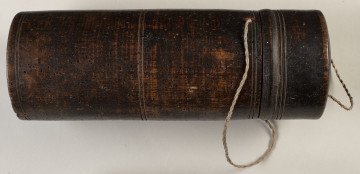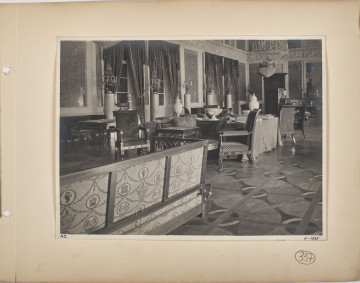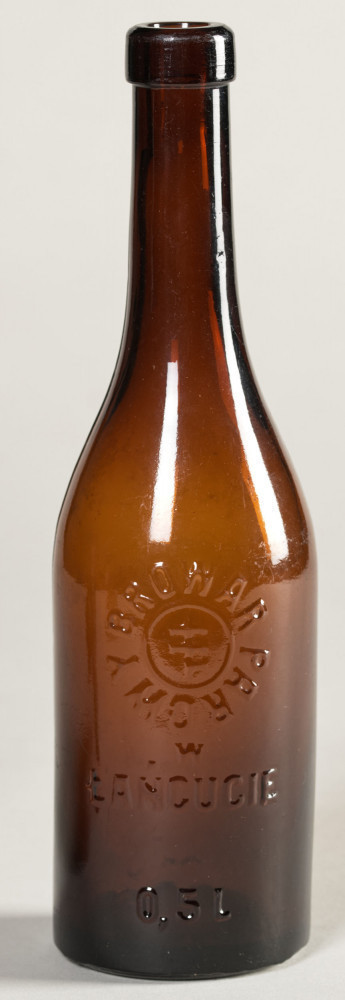
Container for rolls of documents
19th / 20th century
Castle Museum in Łańcut
Part of the collection: Interiors
Historical names: Sala balowa
Time of origin: years 1893-1894
Architect: Julian Karol Cybulski
Artists: F. Lęcznar, Ignacy Lęcznar, Karol Stachyra and Józef Rzeszutko – stucco decorations
Description:
The ballroom is one of the few interiors of the former Clerks' Casino with a preserved historical layout and architecture. From the very beginning of the building's existence, it was the most impressive and representative room intended for events the nature of which was strictly defined by the role of the room. The building, together with the ballroom covering almost two floors, was erected by the Potocki family in the center of Łańcut, on a plot of land known as the “old post office”. It was built as a free-standing building, with its northern facade facing the then main street of Łańcut. Its construction began in the spring of 1893 after receiving the permission of the local authorities and discussing the construction matters with entrepreneurs and the architect Julian Cybulski, including his assistant Czadek. Officially, the casino started operating in 1895.
The architecture of the Casino is stylistically consistent with the historical trend inspired by the art of the Renaissance in France, popular since the 1870s. It was built in the late period of the second phase of the French Neo-Renaissance, conventionally called by Tadeusz S. Jaroszewski the "French costume". The decor of the ballroom also has Renaissance details which consist of a corner frieze, a floral stucco ornament, a rosette or a regency ornament on the balustrades. The first social events took place in the ballroom already in the end of 1894, which is confirmed by the record made on October 6, 1894, referring to "a beautiful ceremony" during which "a group of almost all officials said goodbye to their friend...". From that moment, the building became the headquarters of the Casino Society founded in Łańcut ca. 1880, and, as a closed social club, it played its role until the outbreak of World War II. The local intelligentsia took part in the events organized on a large scale which, apart from the officials, i.e. private clerks employed in the Potocki family's estate, included state officials and representatives of the liberal professions. As part of its activity, the Casino organized various events, such as lectures or dancing parties, including balls with the participation of Count Alfred Potocki. All kinds of games were allowed in the casino's premises, except for gambling. The casino also housed a library and a reading room. However, it was mostly used for social and entertainment activities, and it was established mainly for this purpose. In addition to dancing parties organized mainly during the carnival, the premises held, among others, Christmas parties organized for poor children by Countess Elżbieta Potocka. In addition to the ballroom, the building housed much smaller, slightly different rooms, including for a cafe, and rooms equipped with tables for playing cards and billiards.
Bibliography:
Kluz Joanna, Łańcuckie Kasyno Urzędnicze (cz. I), Łańcucki Biuletyn Miejski, nr 72/2017, s. 13-15.
Kluz Joanna, Łańcuckie Kasyno Urzędnicze (cz. II), Łańcucki Biuletyn Miejski, nr 73/2018, s. 13-14.
Object type
Interiors
Creation / finding place
Owner
Castle Museum in Łańcut
Identification number
Location / status

19th / 20th century
Castle Museum in Łańcut

20th century
Castle Museum in Łańcut

1st half of the 20th century
Castle Museum in Łańcut
DISCOVER this TOPIC
Museum of King Jan III's Palace at Wilanów
DISCOVER this PATH
Educational path